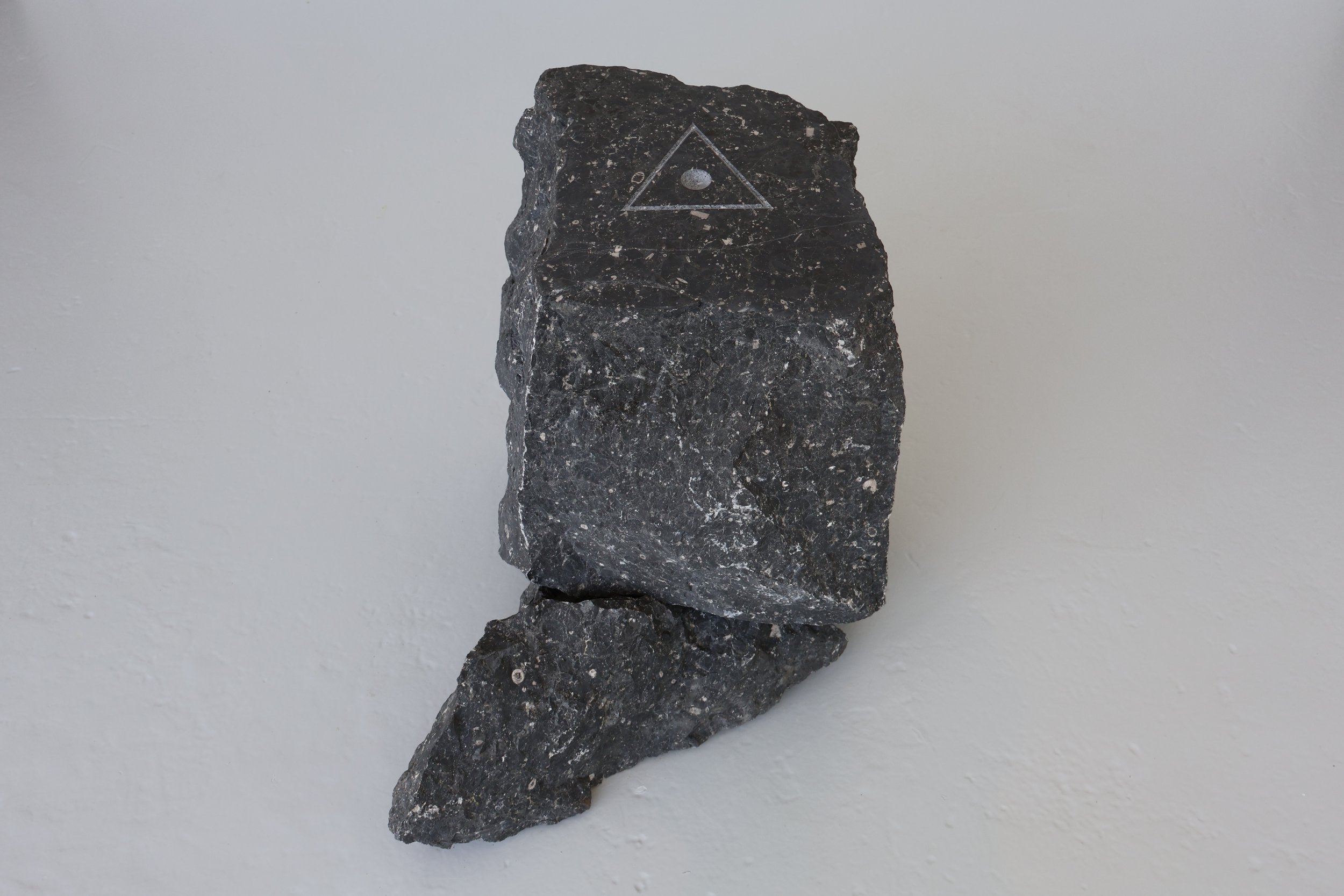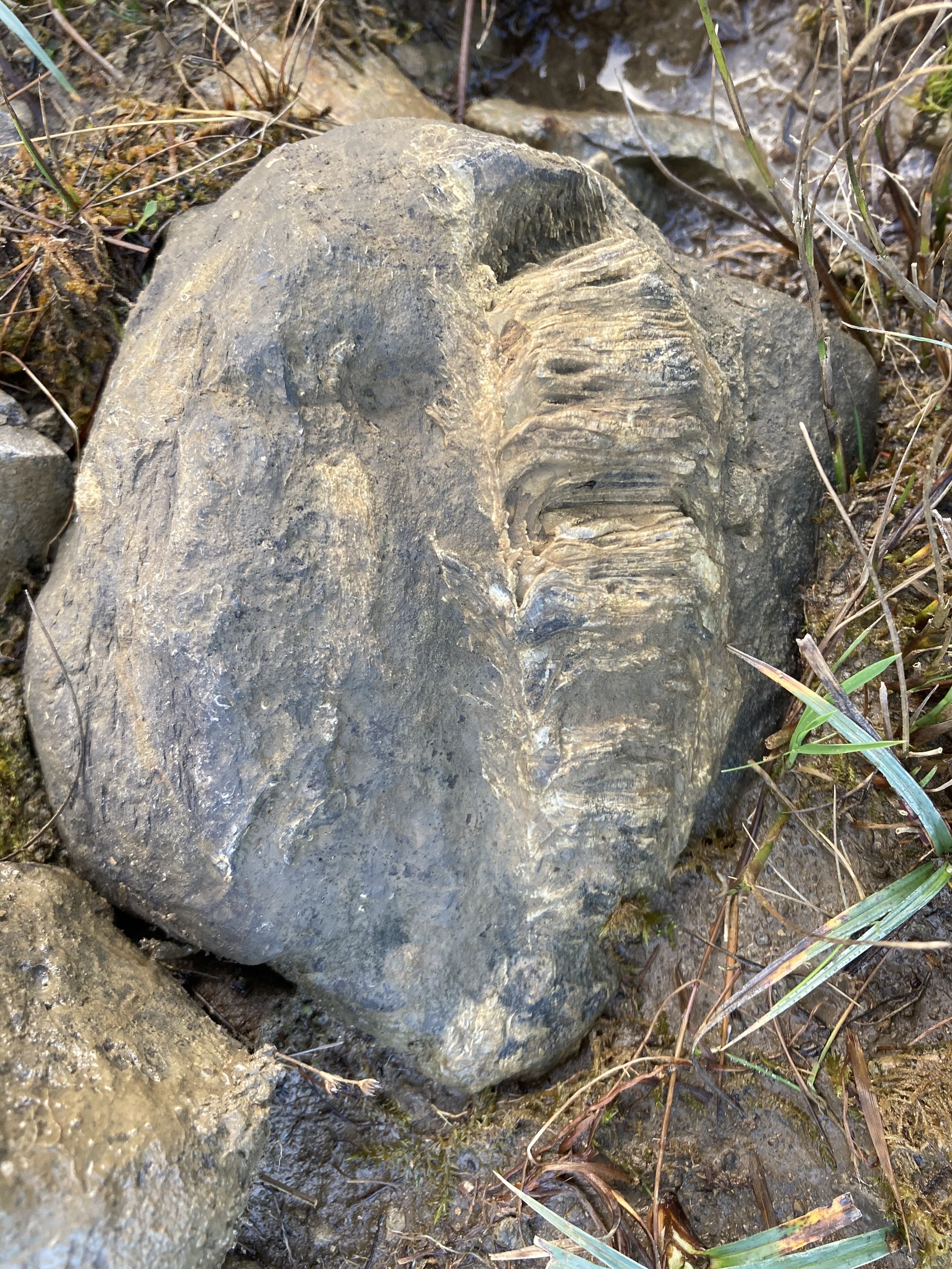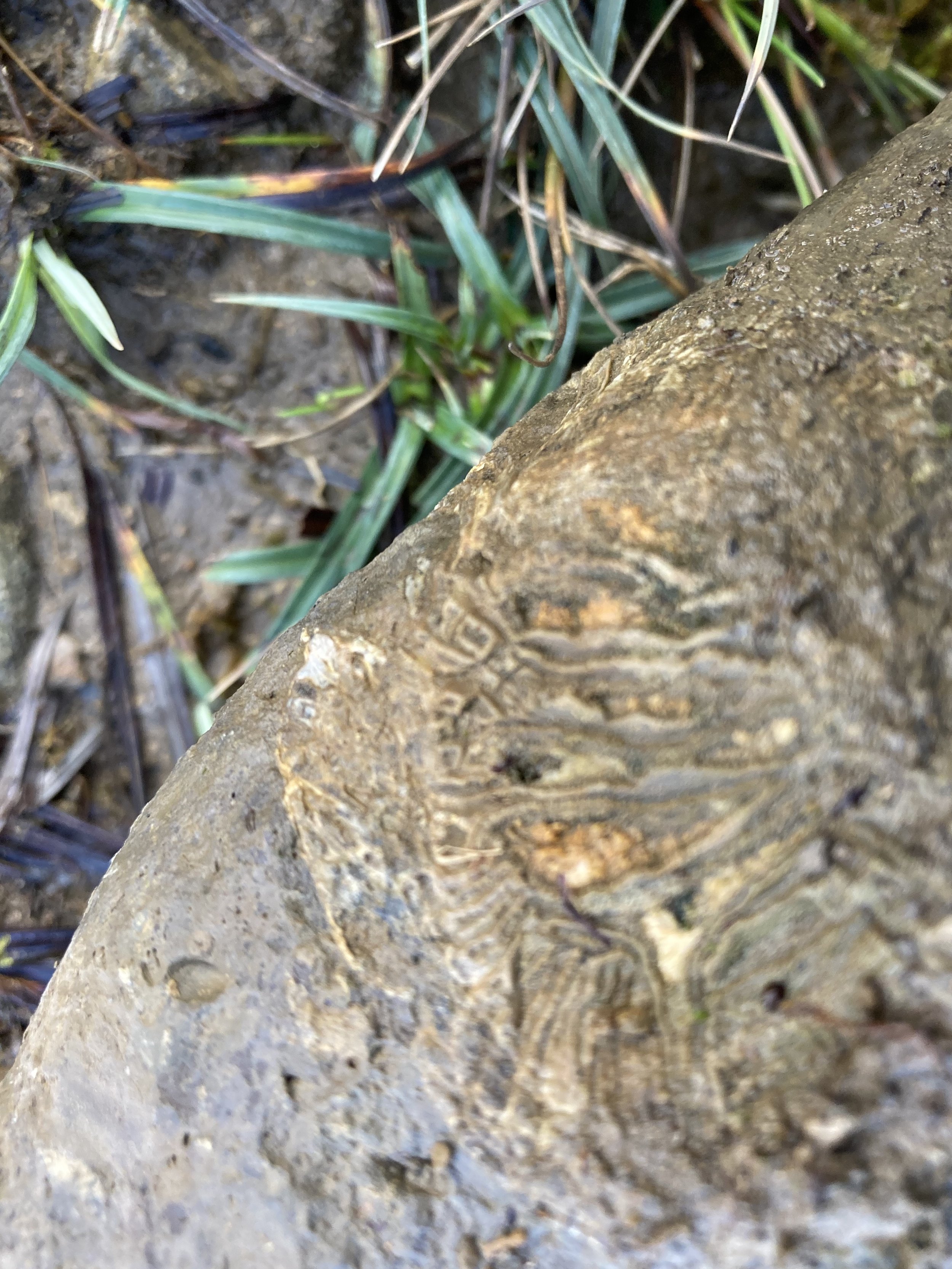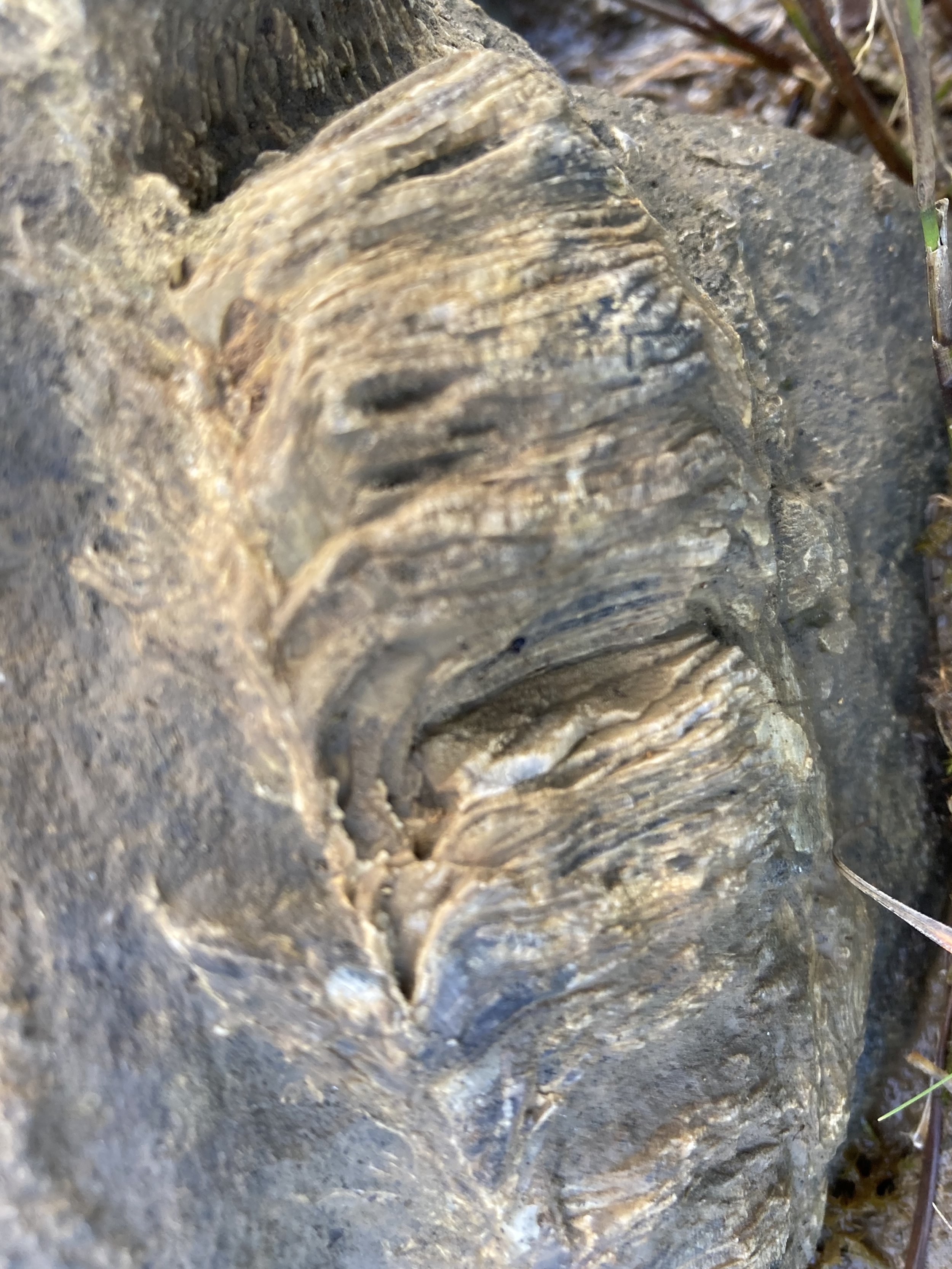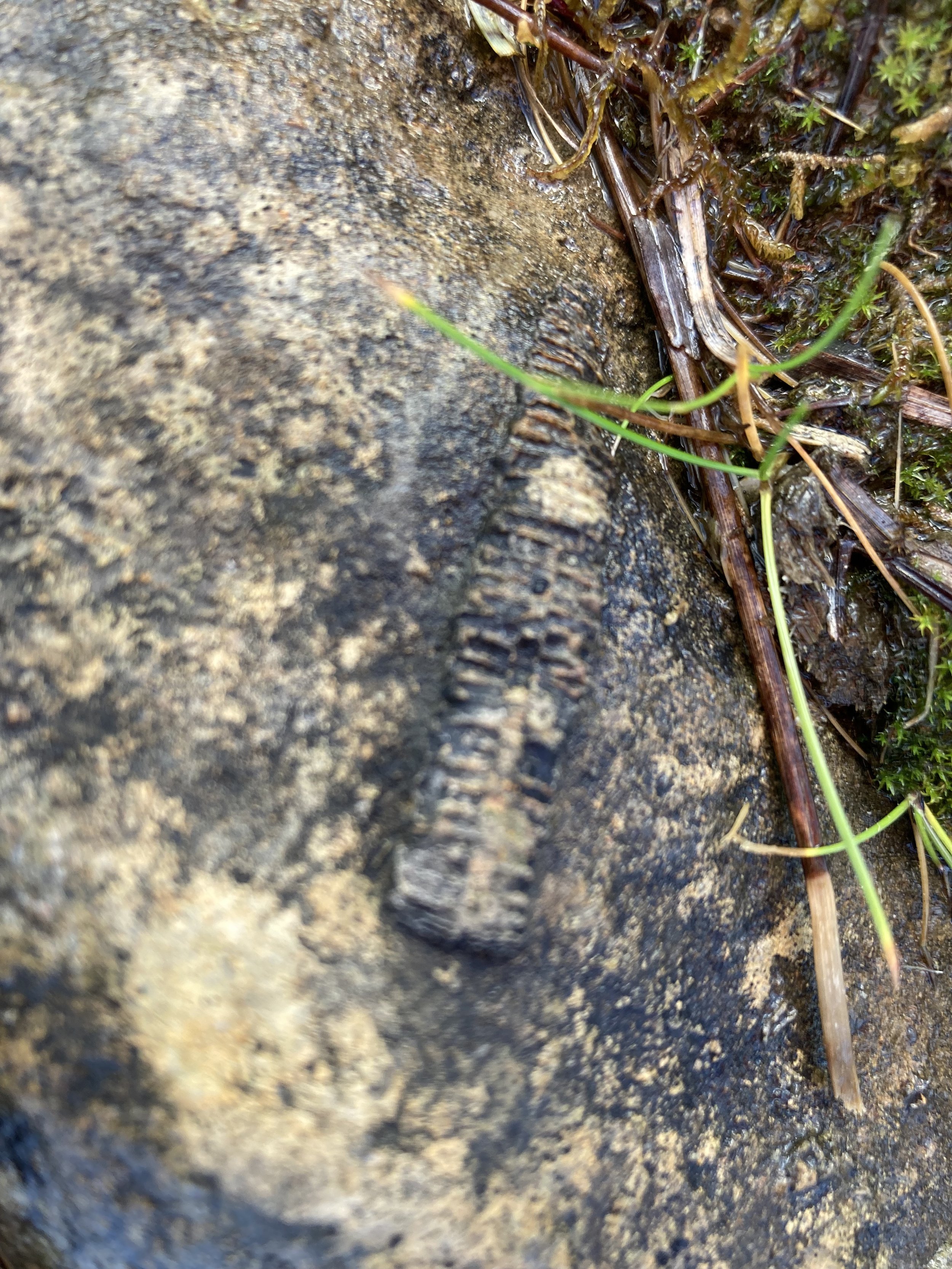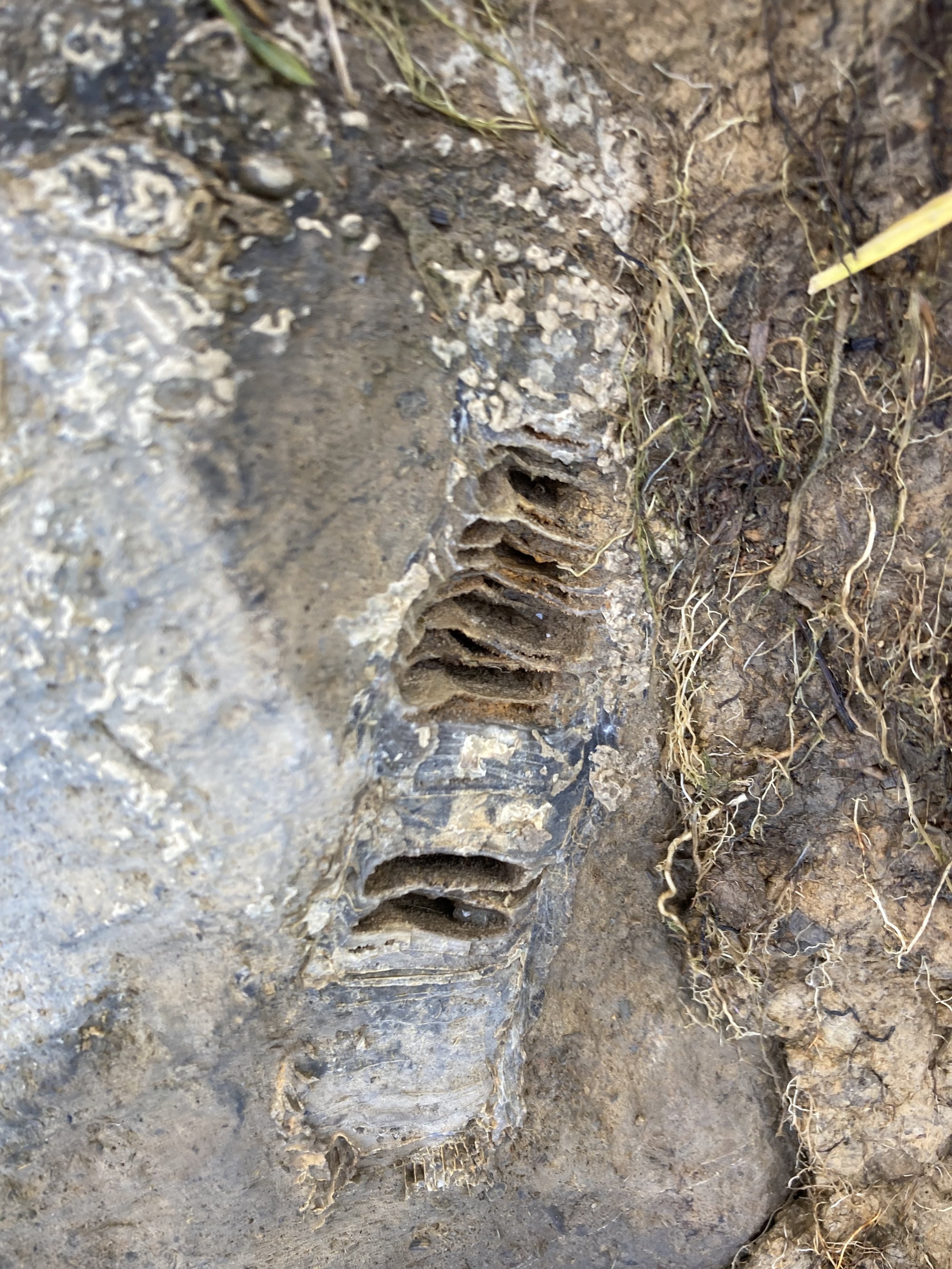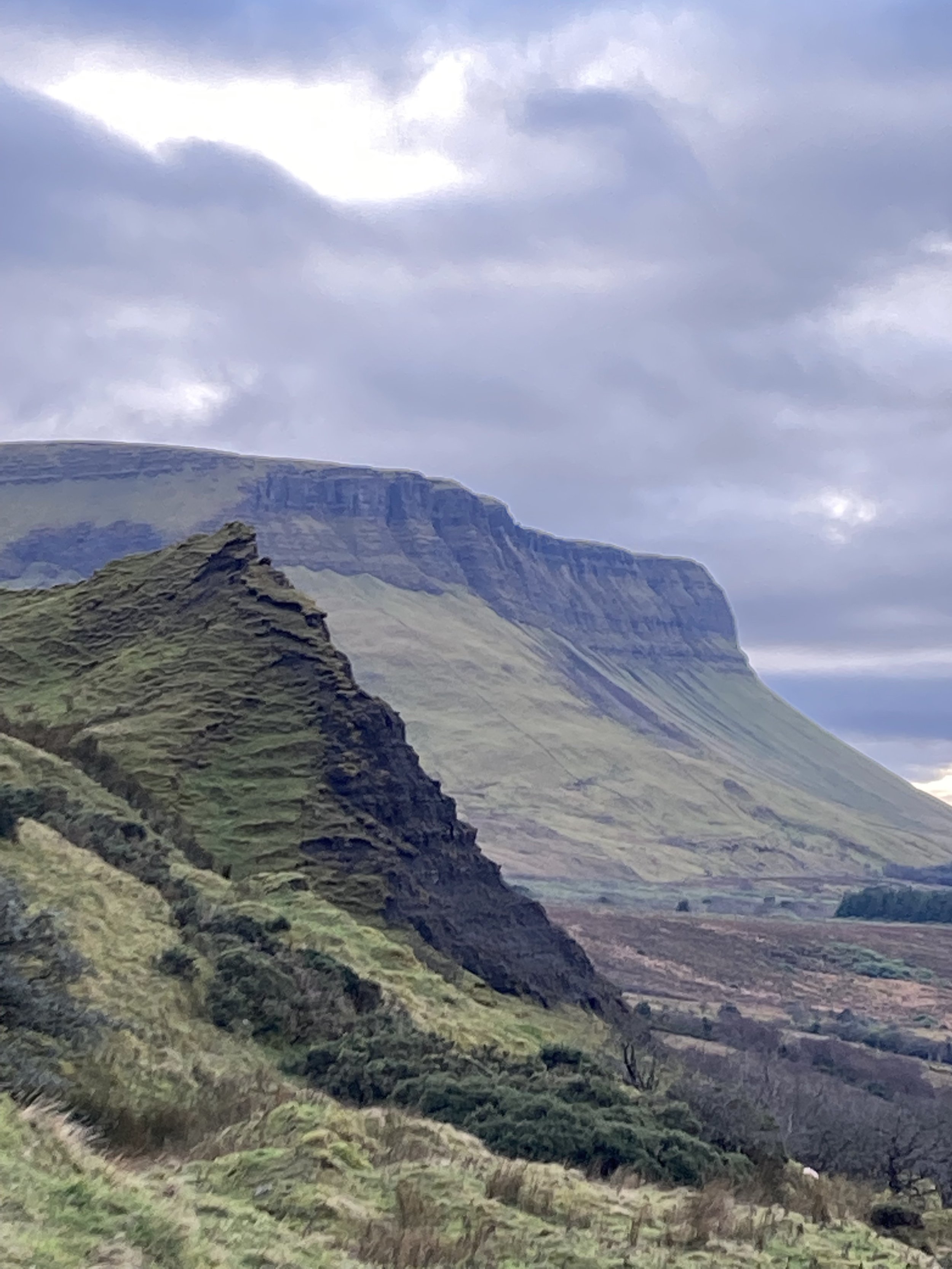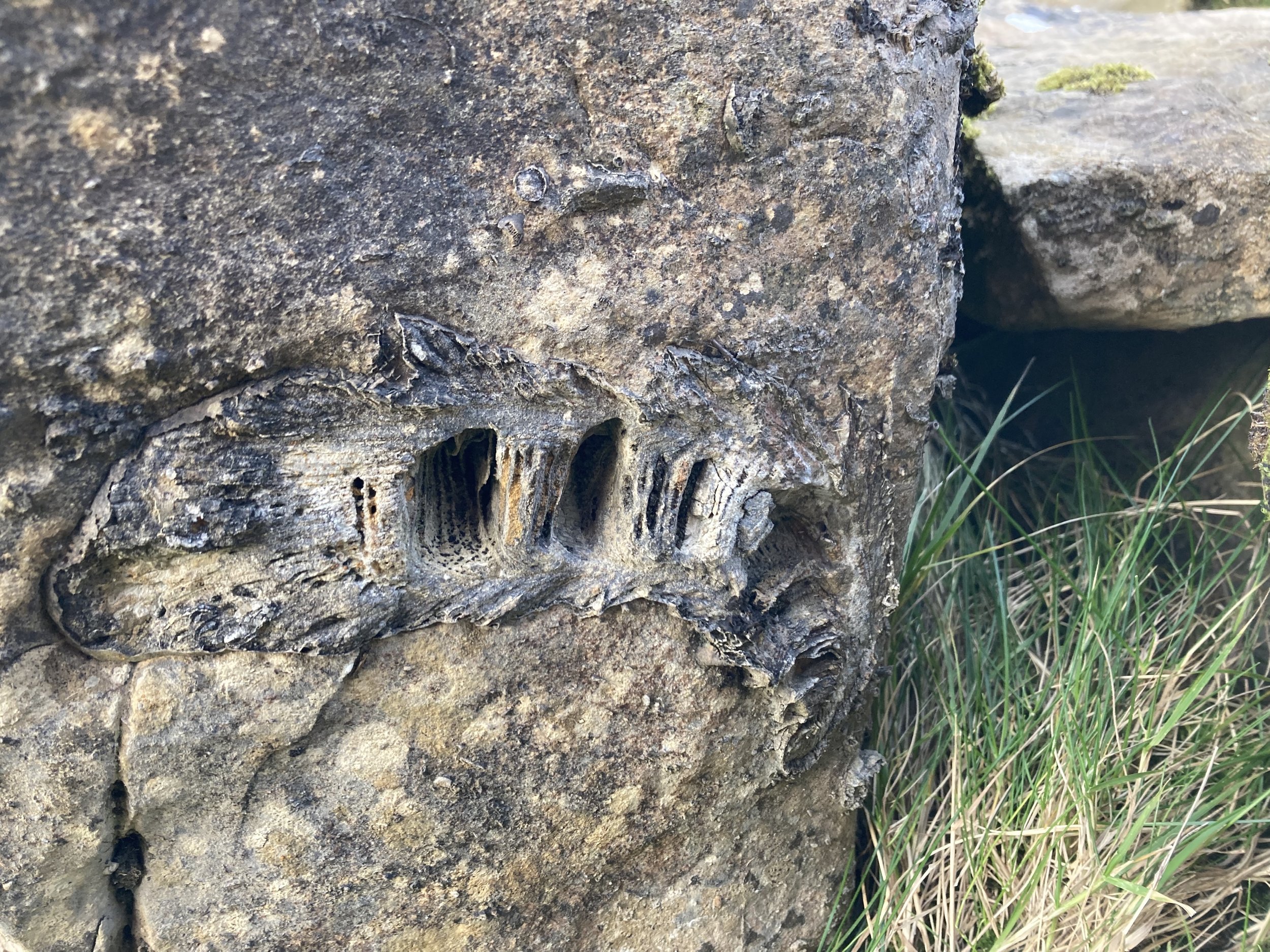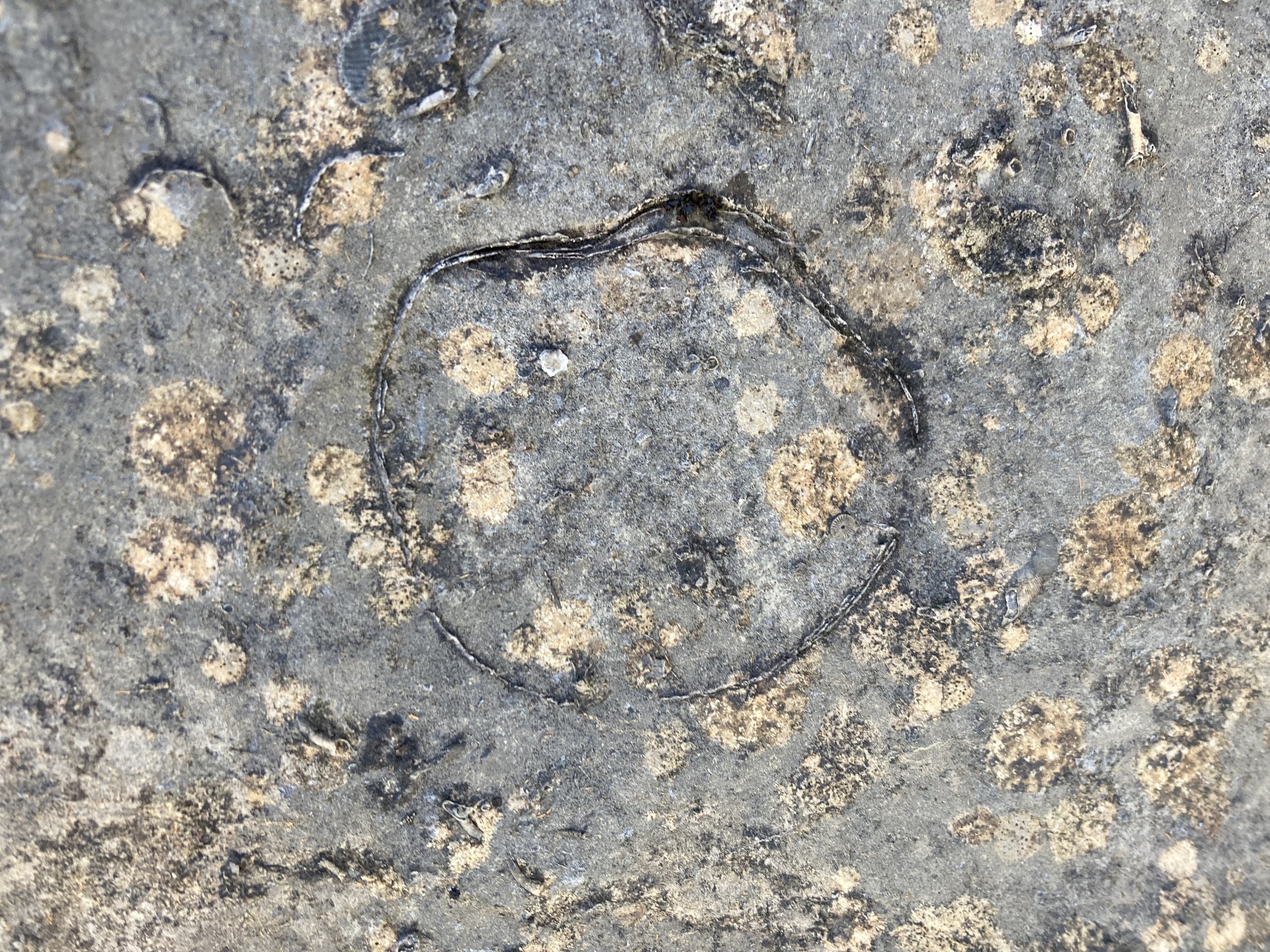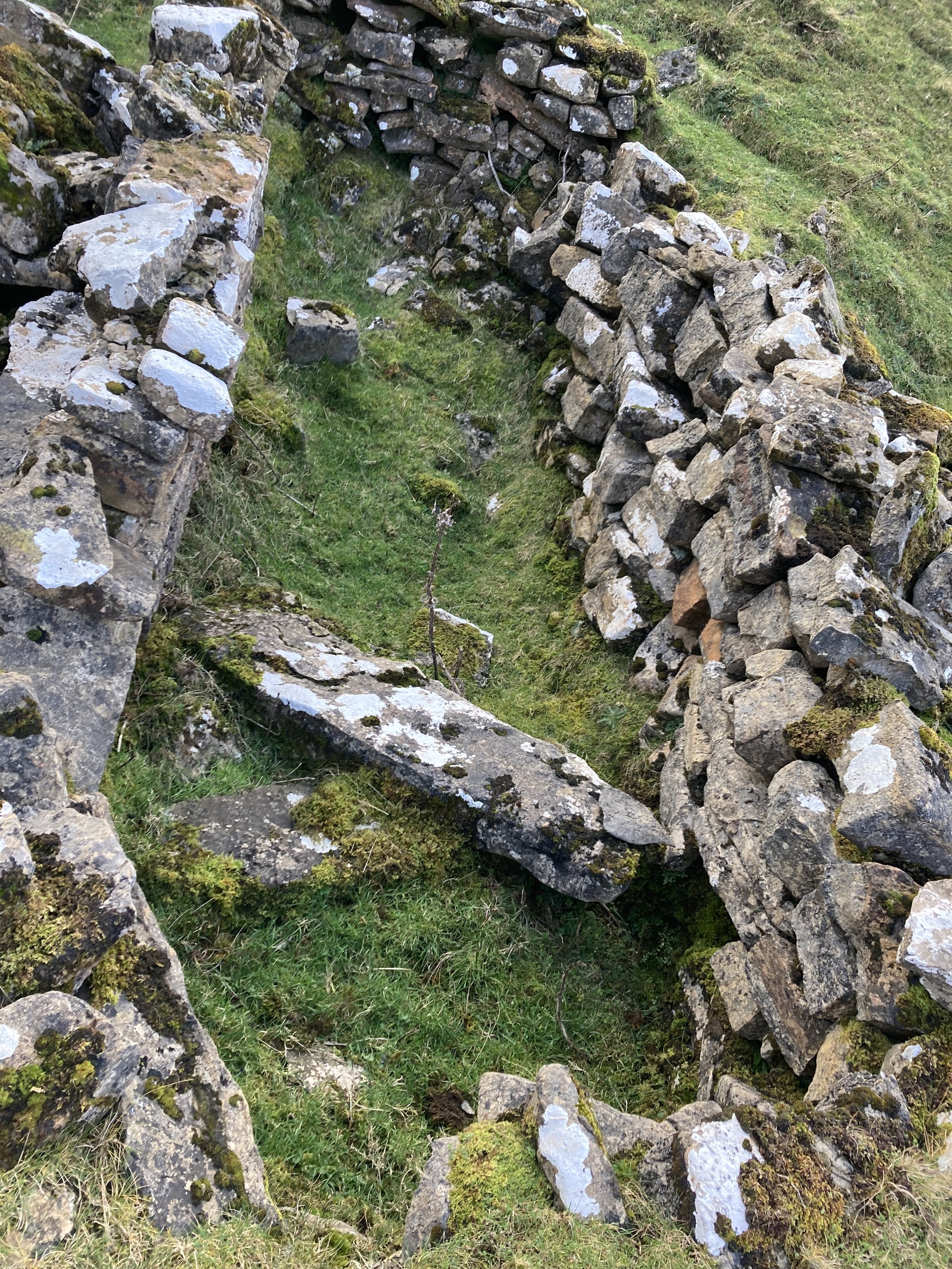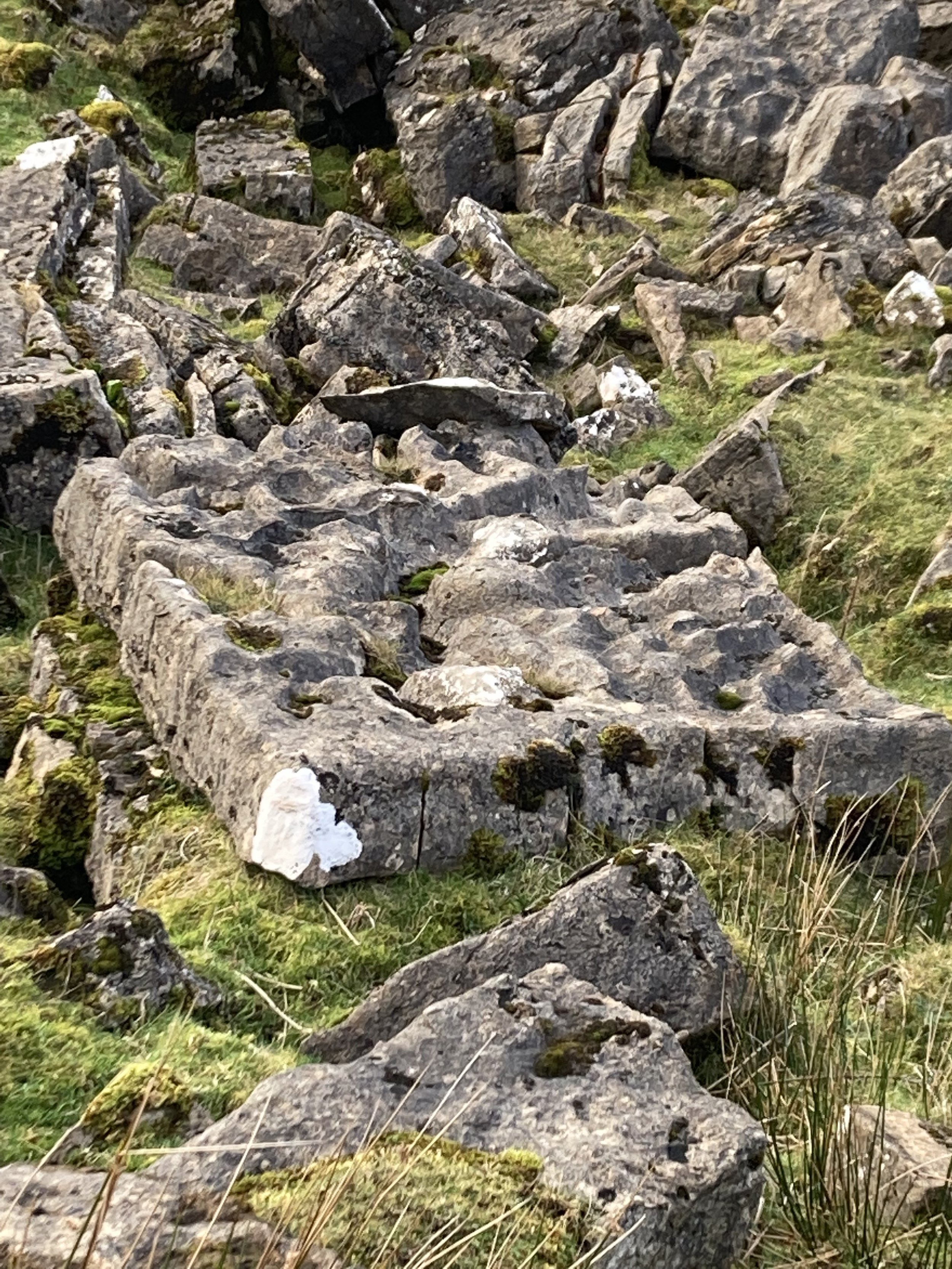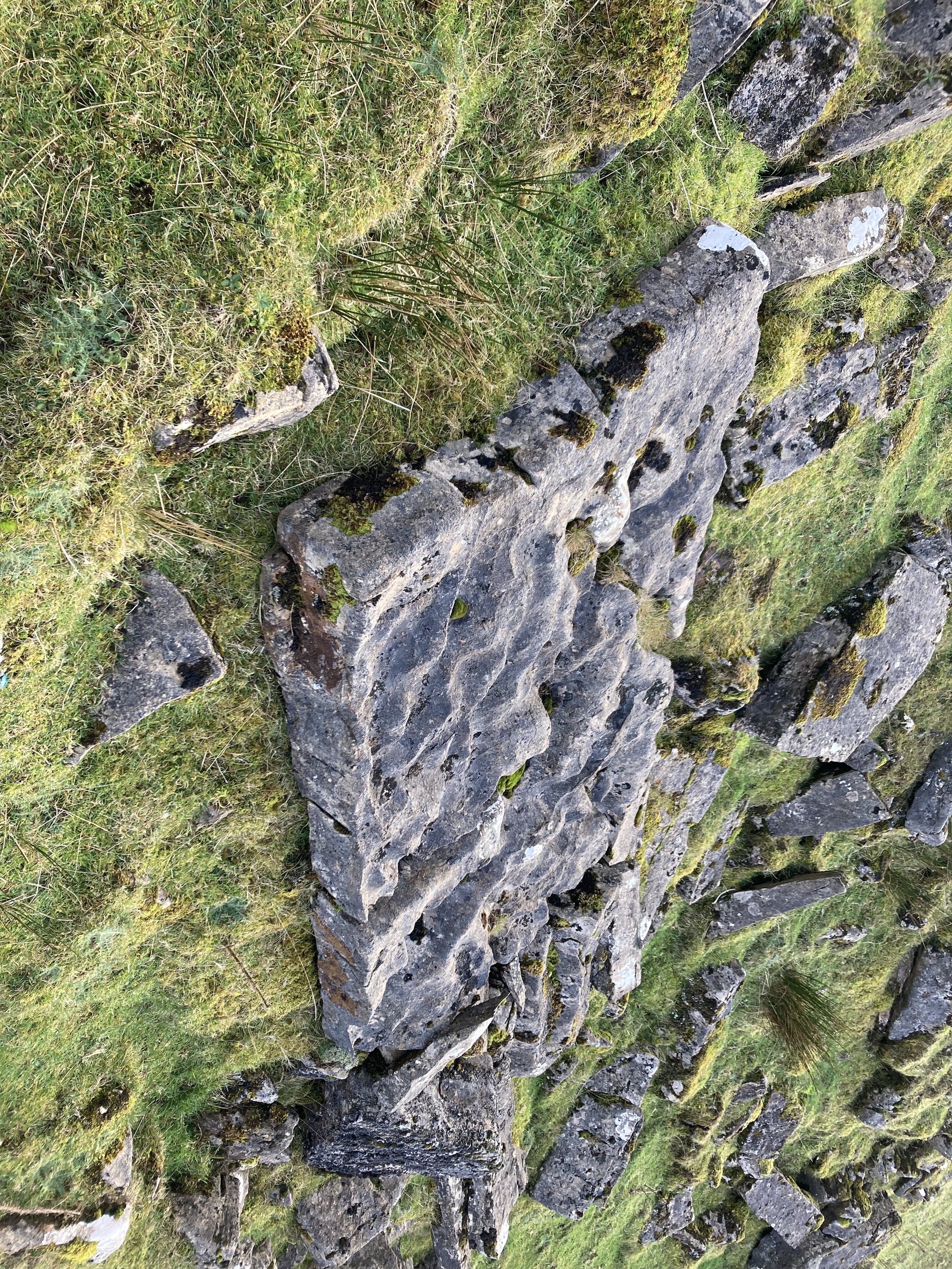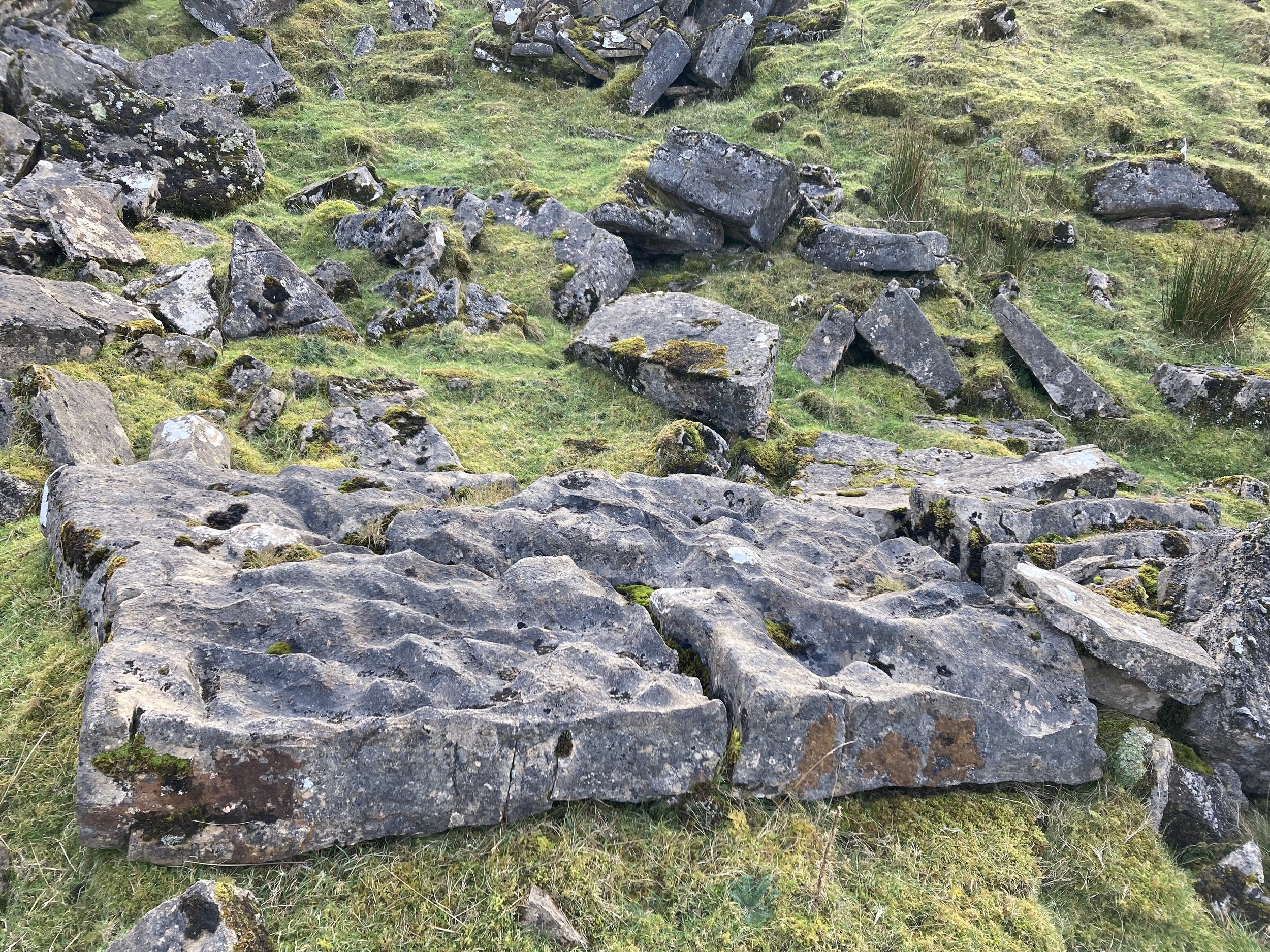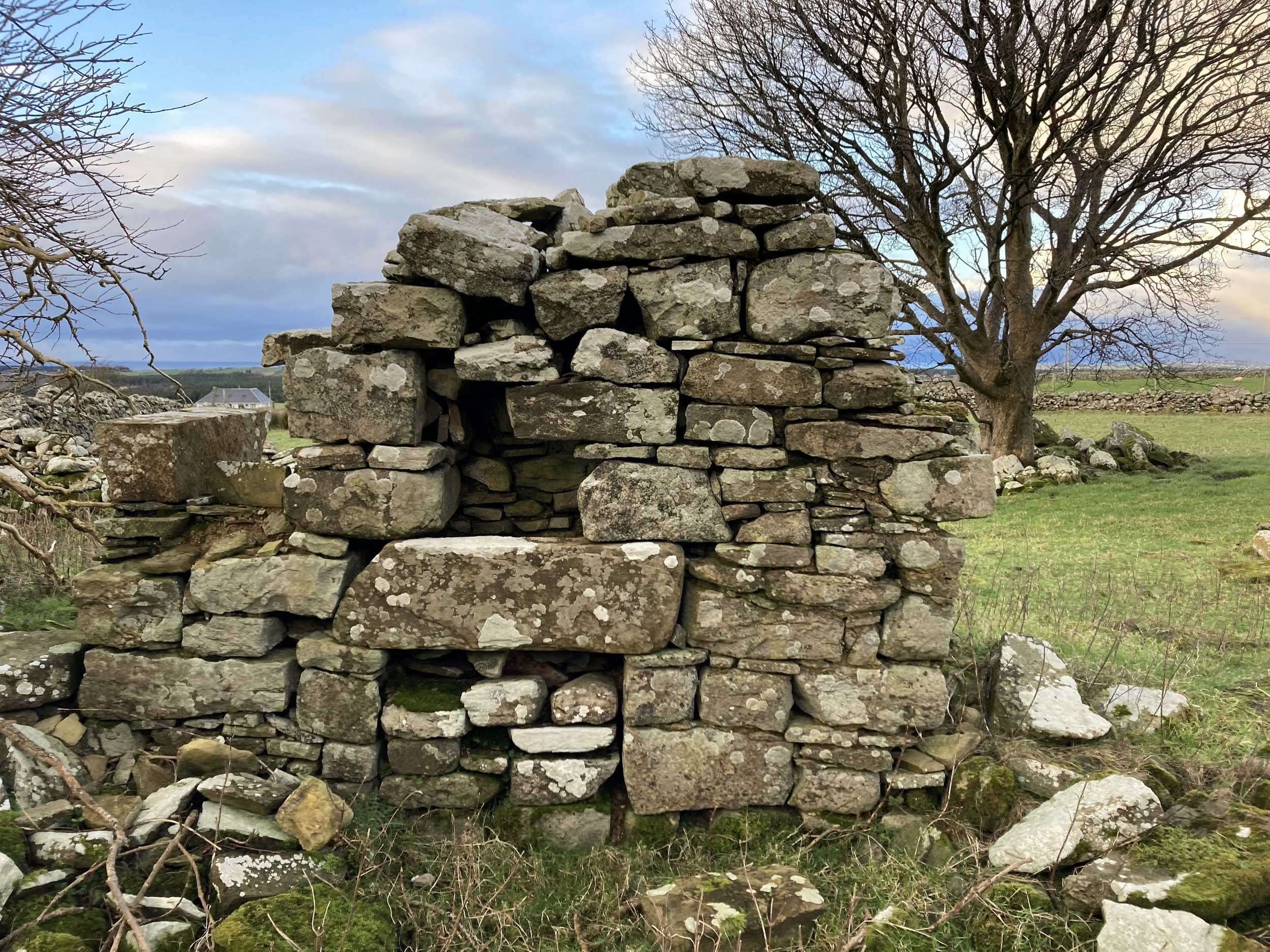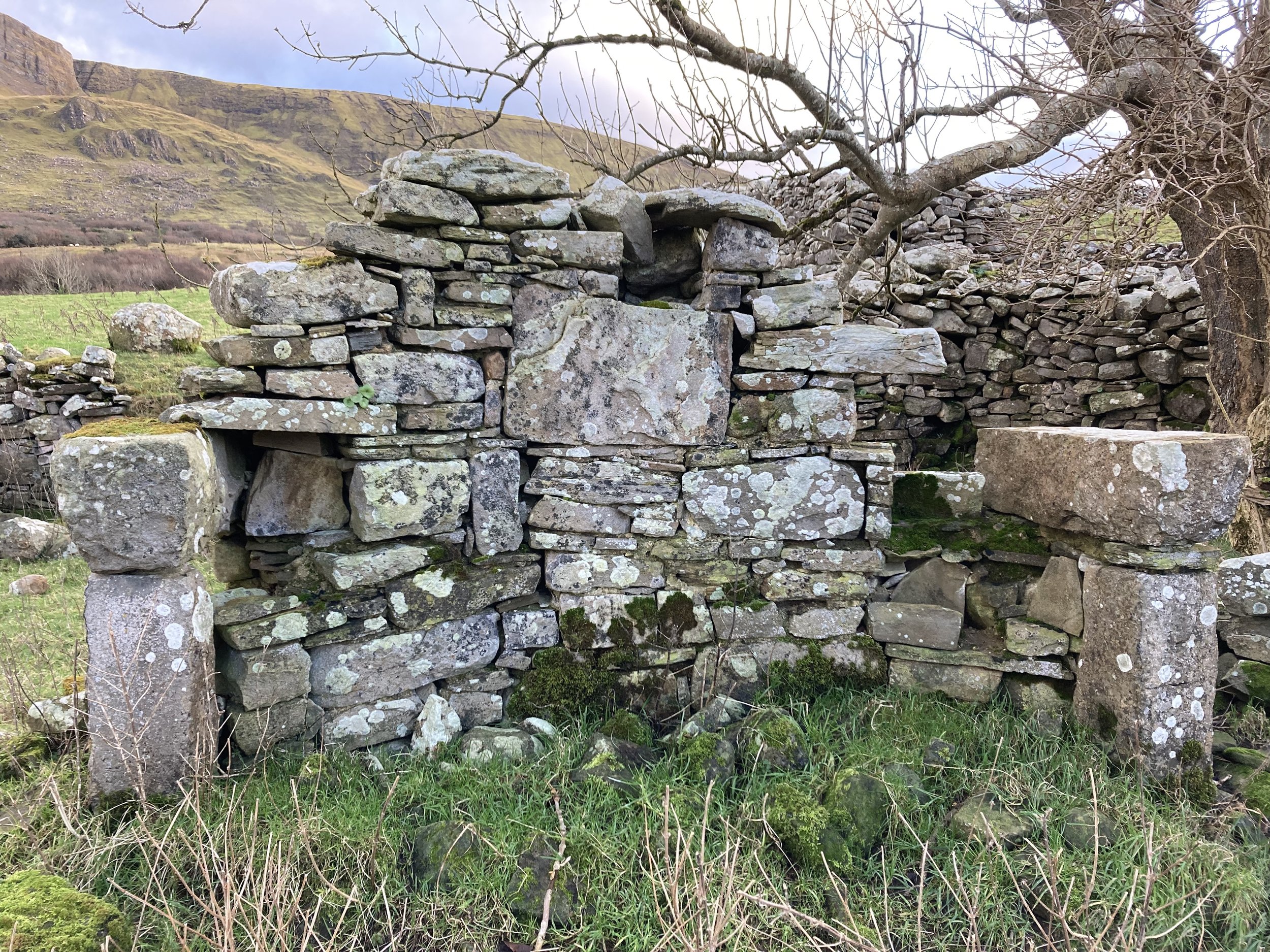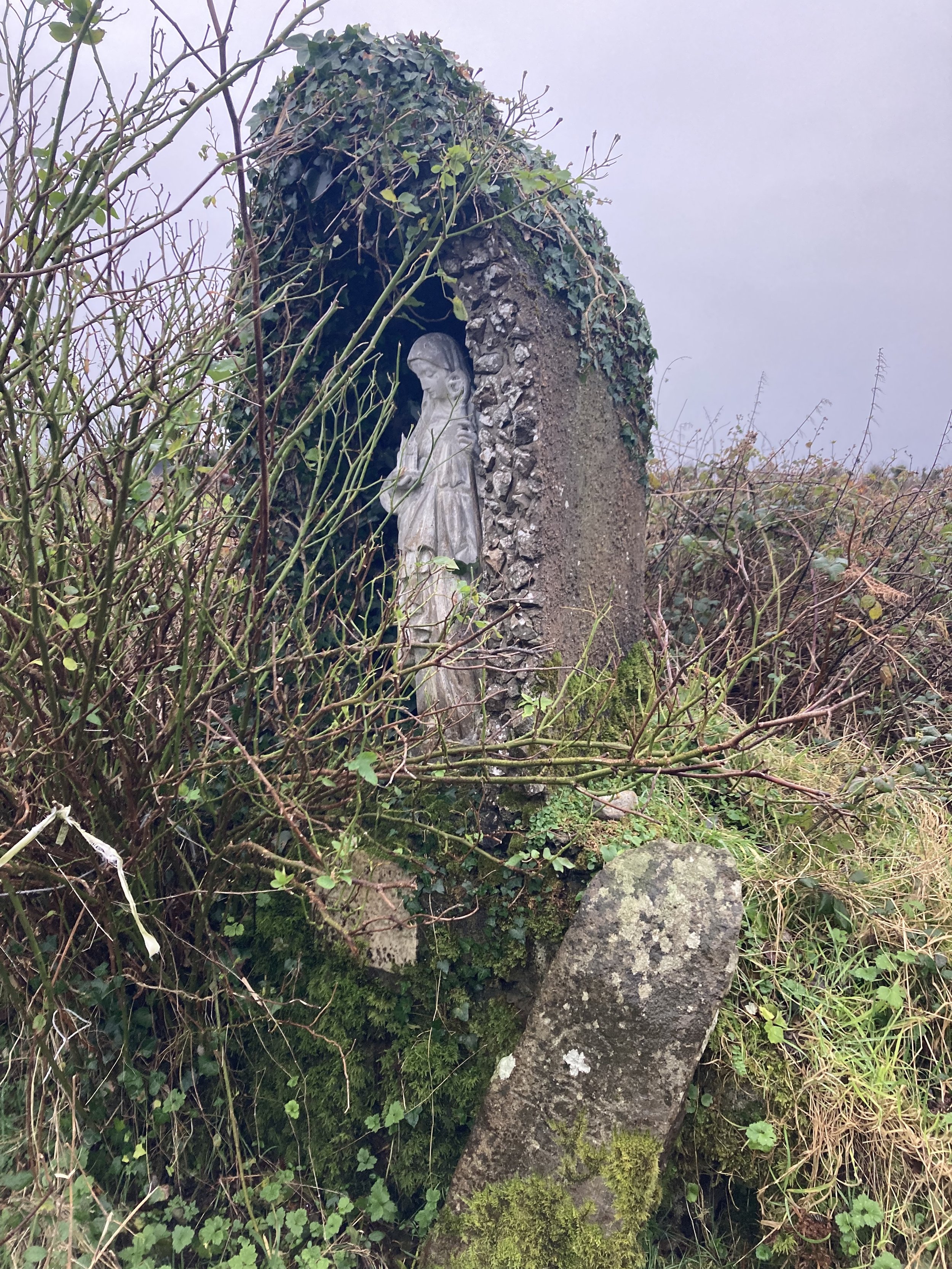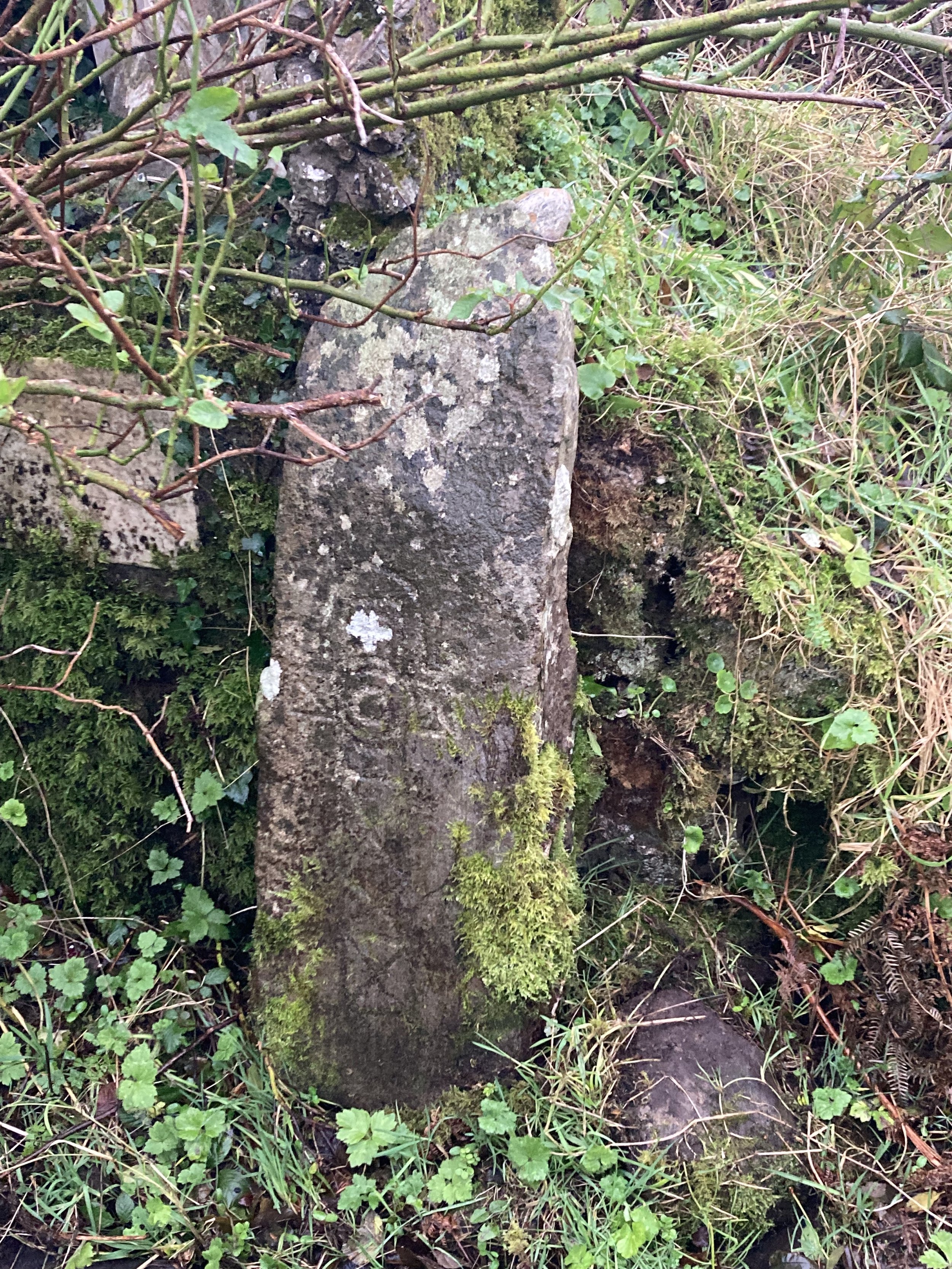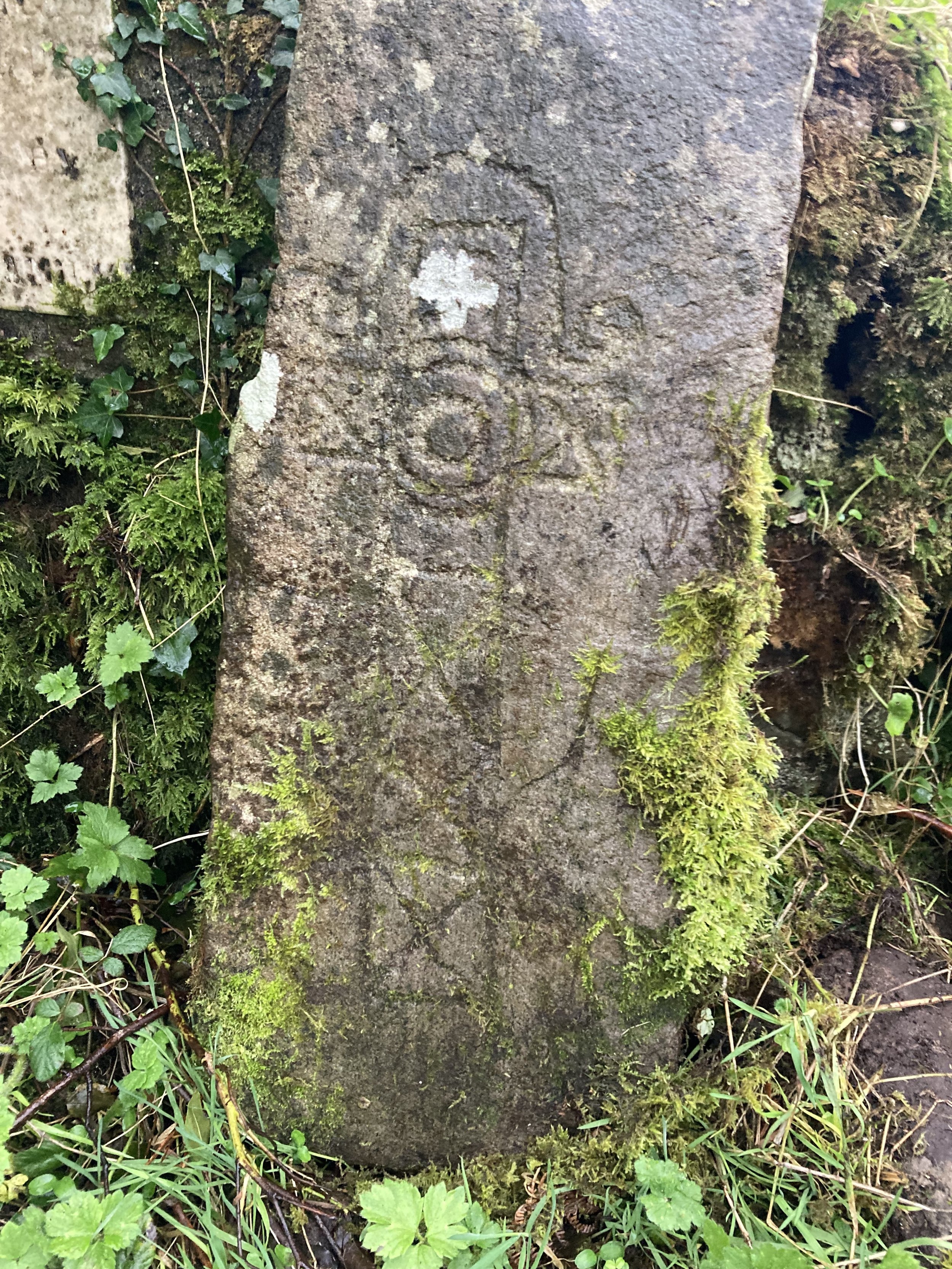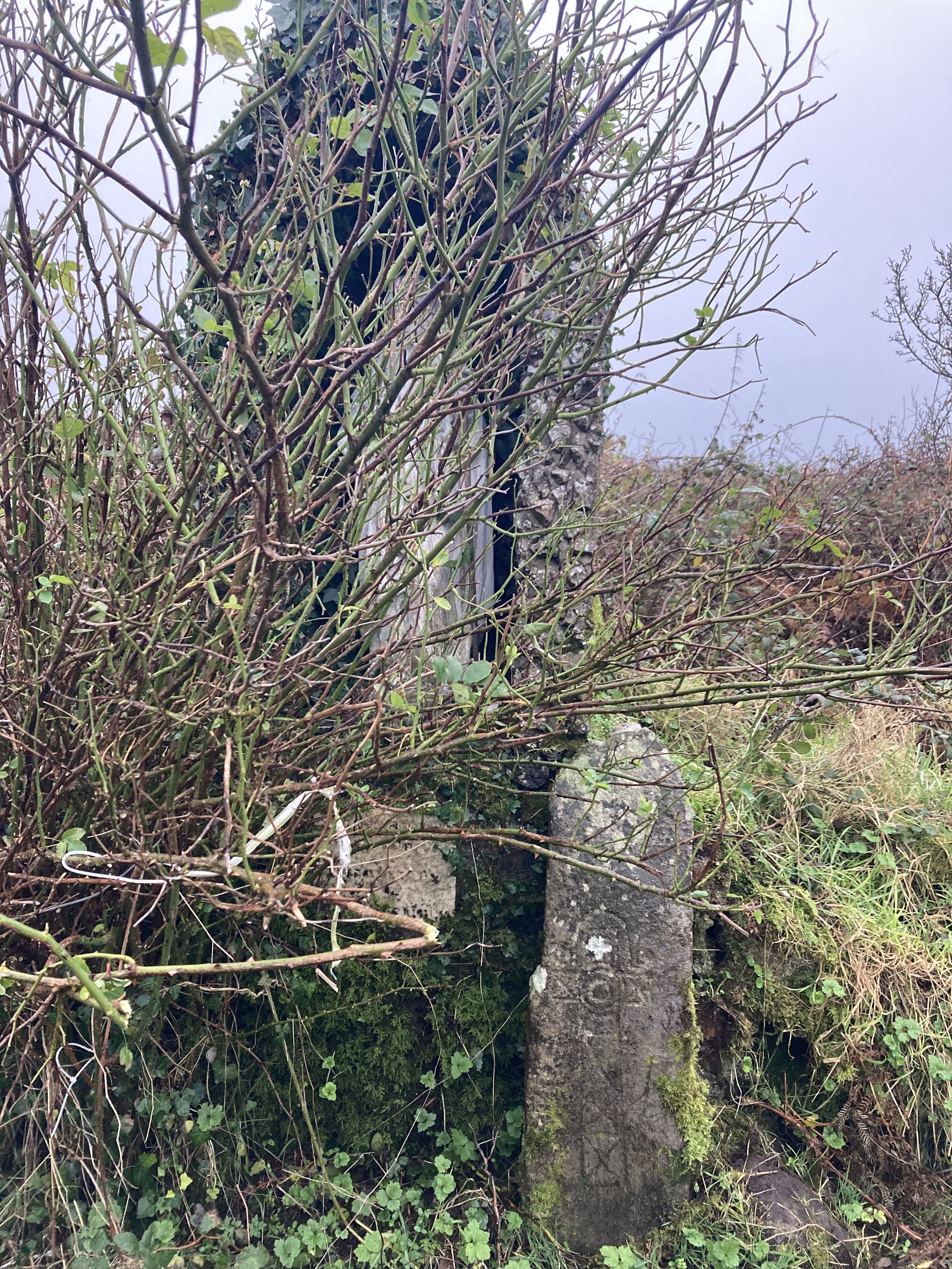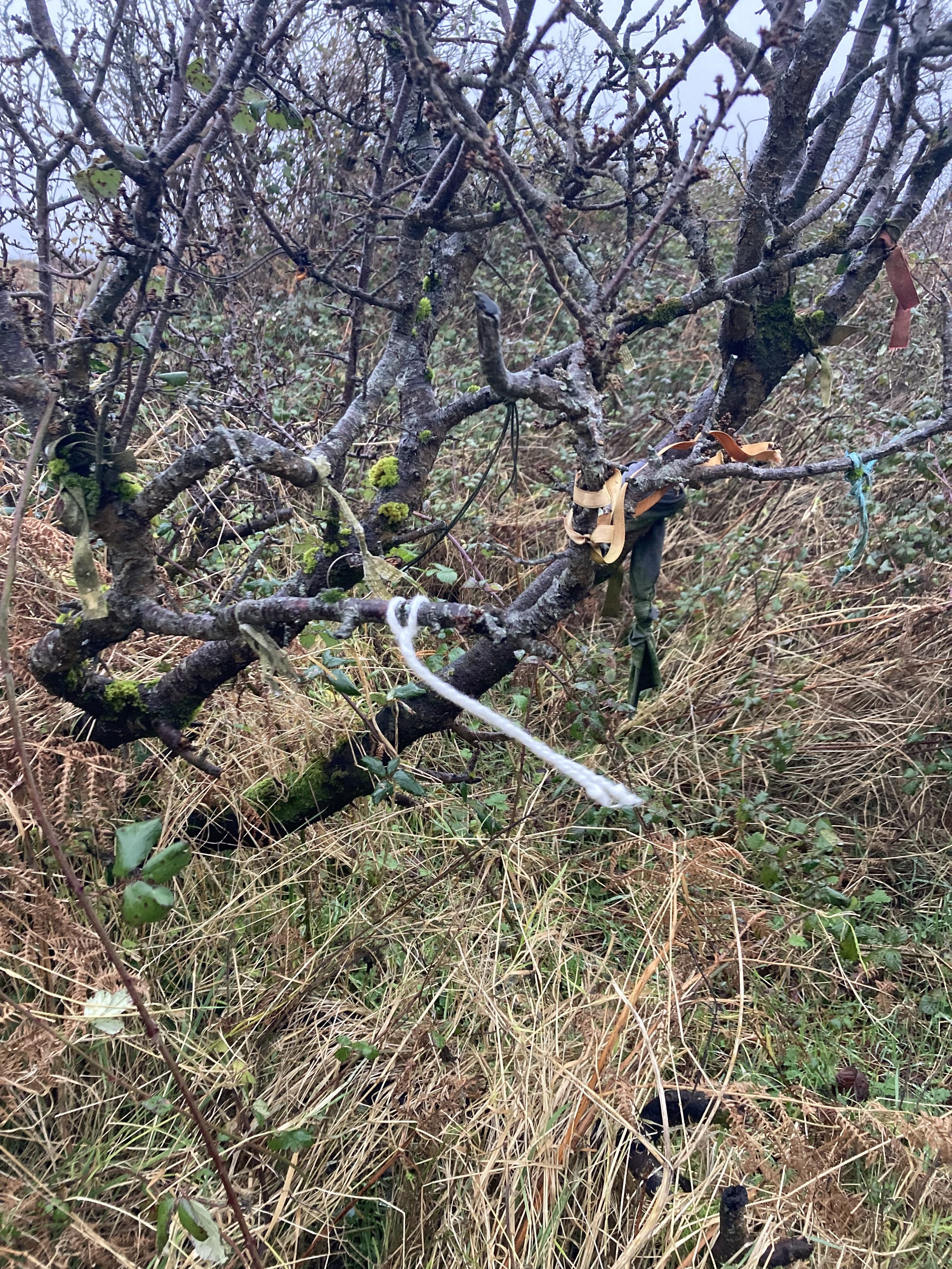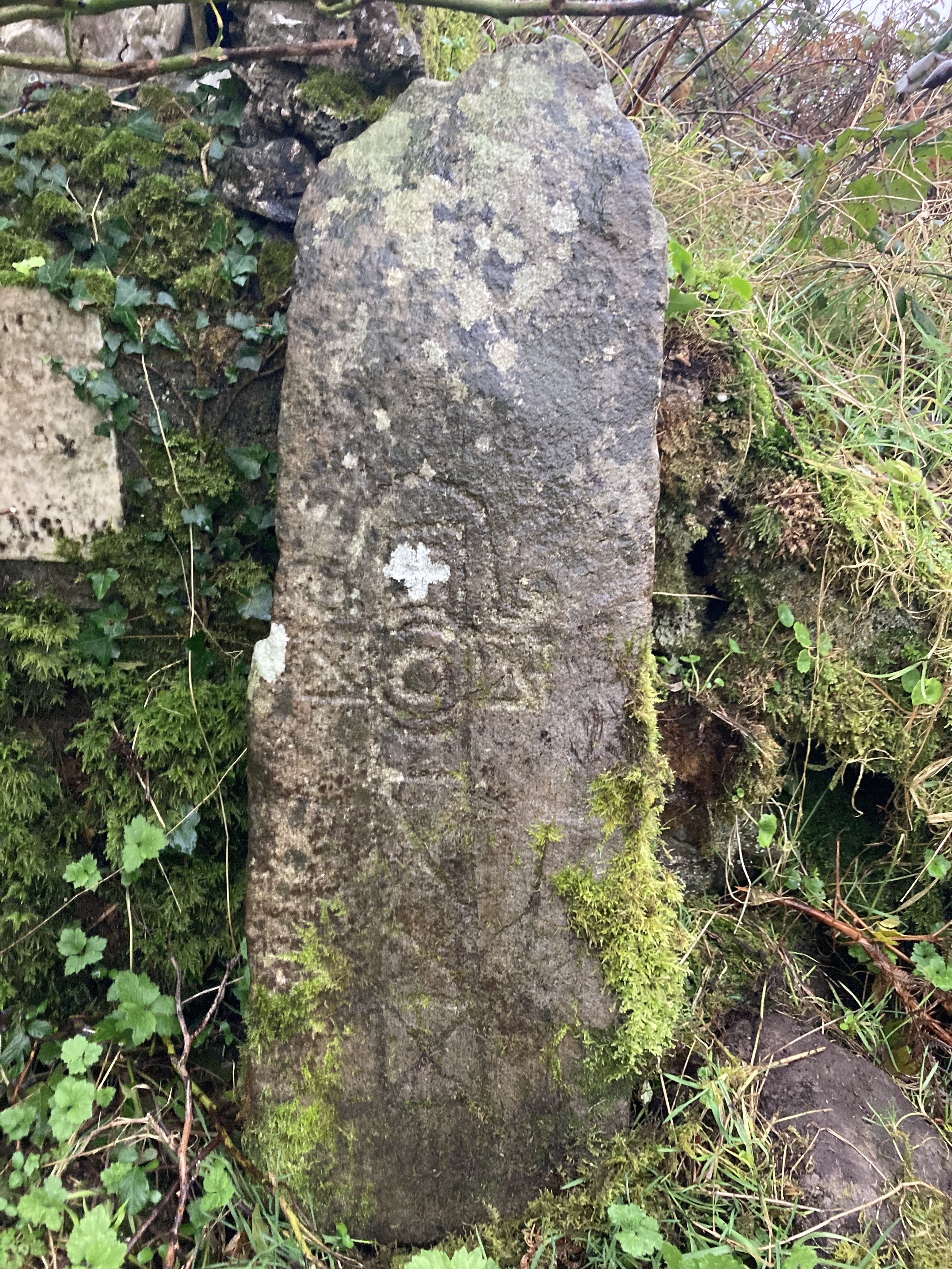Mining for Fossils and a Better Future: Kathryn Maguire’s Geological Sculptures Voice People and The Land
Tuesday, October 01, 2024 11:00
Mineral Mountains & Azimuth. Cast pigmented jesmonite with gold, shungite and iron oxide on wooden plinths.
The Mountains are inspired by geodata forms of Iron Mountain, with additional minerals imbued with healing pure pigments. Azimuth - gunter chain on pigmented wall.
Mining for Fossils and a Better Future: Kathryn Maguire’s Geological Sculptures Voice People and The Land
By: Olivia Ann Carye Hallstein
Kathryn Maguire gives form to location-specific minerals and, by doing so, creates gentle conversations about environmental activism and difficult histories. Through a highly collaborative and research-based approach, her pieces speak both to stories and aesthetics embedded in materiality and the land. In her recent solo show, To the Mountain, and throughout her career, Kathryn solidifies connections between the experiential landscape and what lies beneath its surface.
To the Mountain, 2024. Leitrim Limestone carved with a trig point symbol by Seamus Dunbar.
Kathryn, I want to start with your current and first solo show, “To the Mountain.” What has this exhibition experience brought to your practice?
The gallery space is a test site and space for expanding and dreaming, it’s a great supported exhibition residency. I was fully immersed in the works and the space. I could spread my wings as it were. I could dream the space into being and be embedded in the work. Overall, the opportunity to create a solo show helped focus and define my practice and making. It allowed me to hone my ideas and complete conversations.
Underground Potential, 2022/2024, sculpture made in Jesmonite and pigments inspired by the form of Mir Mine in Russia, the deepest mine in the world, the Treasure Leitrim used the Mir Mine as an image on their posters.
Locality is deeply embedded in the spaces and conversations you integrate in your work. What do you hope artistic expression can uniquely achieve for your awareness work?
The exhibition To the Mountain had real tools of measurement used in surveyance and mapping. I wanted to make this visible. The mapping of Ireland occurred in the 1800’s when Ireland was ruled by the British Empire. Ireland was the first country to be entirely mapped in the World. The technology involved was extraordinary.
The local history of Leitrim is in a critical position as there is a risk of Gold and Silver Mining. Regional organizations have worked tirelessly to object to the mining, as it will risk the landscape, water and people within a large area of Leitrim.
Many geologists have said we have extracted all the metals we need; all those metals need to be reused and recycled; this would involve the circular economy model. In Ireland, there is an incentive for everyone to recycle and repurpose and it’s advertised on the radio and TV. The vision for the Programme, which is led by the EPA, is an Ireland where the circular economy ensures that everyone uses less resources and prevents waste to achieve sustainable economic growth.
Brake Dust, 2020, Jesmonite casts explore the idea of what Air Pollution might look like if it were imagined as a sculptural object. This is the first in a series of works using crystallography to imagine the unimaginable and indecipherable. The individual casts are scaled-up models of the crystal magnetite, which is an iron ore.
This is such important information given the contentious history that played out not far from your show and residency location at Leitrim Sculpture Center. What considerations have come up while exploring the local landscape?
The border is no longer a charged political zone, although there are levies and taxes charged on goods since Brexit. As a result, it has become more expensive to make artwork in the South, due to shipping fees and VAT increases.
I was very conscious of the new extractive industries that have attempted to open up Gold mining in Leitrim, they have managed to secure prospecting licenses, but have not been able to mine due to the orders being blocked or delayed. The local Save Dough Mountain group, Stop Mining Leitrim and Treasure Leitrim groups have done incredibly extensive research on the devastating damage it will cause to wildlife, the local water and people and the mountains.
While on site, I was very aware of the groups and the tension in the area due to the threat. In 2023, the “Leitrim Under Attack,” a two-day event saw local environmental activists host “water protectors” involved in the Standing Rock protest against the Dakota Access oil pipeline in the United States. “We are here in solidarity and support of the folks in Leitrim who want to keep gold mining out of their county,” said Chas Jewett, a Lakota activist who was involved in the Standing Rock protest. “There are other ways for us to be living. We should be thinking about the seventh generation, seven generations from now and about their access to water rather than our access to gold.”
I feel the way I positioned the artworks in the gallery was a gentle conversation about over-mining and extraction. The Underground Potential artwork is a sculpture made in Jesmonite and pigments, in the form of the Mir Mine in Russia, the deepest mine in the world, the Treasure Leitrim used the Mir Mine as an image on their posters.
Rock - A Library of Materials, 2022-ongoing, is an extensive examination of materials. An ancient piece of Quartz sourced from Ubley Waren, from the ‘rake’ of a Roman Lead Mine, was then moulded in silicon rubber. The mould became the form to test and cast multiple materials.
These gentle conversations play out in many of your works through material as well (like the Jesmonite and pigments). What factors do you take into consideration when developing your work?
I would never prise a rock from its location, as that is wrong. As I am a member of many geological organizations (like the Irish Geological Association and the Geological Association in the UK), we go on field trips and share information. I have also extensively researched vast areas and analysed the materials that are often waste specimens left over after quarrying or earth movements.
For example, I collaborated with the wonderful Dr. Diana Clements, who wrote Geology of London. She brought me on many field visits and gifted me plenty of microfossils. Another time, I was loaned an iron nodule and a piece of another mountain from a local stone mason and hillwalker.
In regards to the form, sometimes I will make a mould from the rock and then make multiple new rocks; like my Rock - A Library of Materials. The large work To the Mountain, was carved specifically to enhance the amazing fossils in the stone. That stone was waste surplus from a quarry used for road material.
The stones used in Mapping Mountains had to be from the specific mountains I was 3D printing. I felt it was really important for the stone to be from the exact location. Also, the weight of the stone was similar to the weight and density of the mountain. The limestone used in To the Mountain was from a local quarry and the rock we chose was full of fossils. It felt important to celebrate the fossils and make them visible in the materials.
The Possibility of an Impossibility, 2014. Solid Silver cast Plane seeds taken from Gezi Park in 2013 in Istanbul amid the Gezi Riots and protests. Black vinyl disc.
You've focused on location and history throughout your career from museums to environment and their relationships to political struggle. How has your practice developed over time to center around environmental topics?
My love of stone and mountains has always been there as a hobby that split over into my art practice. The work Brake Dust was the beginning of a conversation about how our environment is us, and how we are geological bodies. This is an ongoing exploration of air pollution and its causes.
In 2014, I visited Istanbul and listened to the stories of the Occupy Gezi movement and heard how Gezi Park was possibly going to be torn up for a shopping mall, and the Trees were going to be pulled down. I immediately felt a need to cast the seeds of the threatened Plane Tree seeds in silver and capture the Occupy Movement in a precious material titled The Possibility of an Impossibility. The work was inspired by David Graeber and his theory on Occupy Movements. In Istanbul, I sought information on building materials and where the rocks came from, and I was bowled over by the generosity and kinship in the geophilia and love of stone.
Thank you, Kathryn! This is such an exciting and insightful body of work.
ecoartspace™ (1997-2019), LLC (2020-2024)
Mailing address: PO Box 5211 Santa Fe, New Mexico 87502
Lithic Alliances 'Kathryn Maguire will engage Sligo Field Club, Sligo Community Archaeology Project and Sligo Neolithic Landscapes to research and learn about the geological events that created Sligo, with the community and with expert advice led by Irish Geological Association.Together they will develop and research a new art work that shall involve a community that shares a commonality – the love of stone, soil and Earth ‘Geophilia’. Kathryn will be mentored by Vaari Claffey.'
https://www.create-ireland.ie/aic-scheme-2022-round-two-successful-recipients/
“the landscape tells - or rather is - a story. It enfolds the lives and times of predecessors who, over the generations, have moved around in it and played their part in its formation. To perceive the landscape is therefore to carry out an act of remembrance, and remembering is not so much a matter of calling up an internal image, stored in the mind, as of engaging perpetually with the environment that is itself pregnant with the past” Ingold

